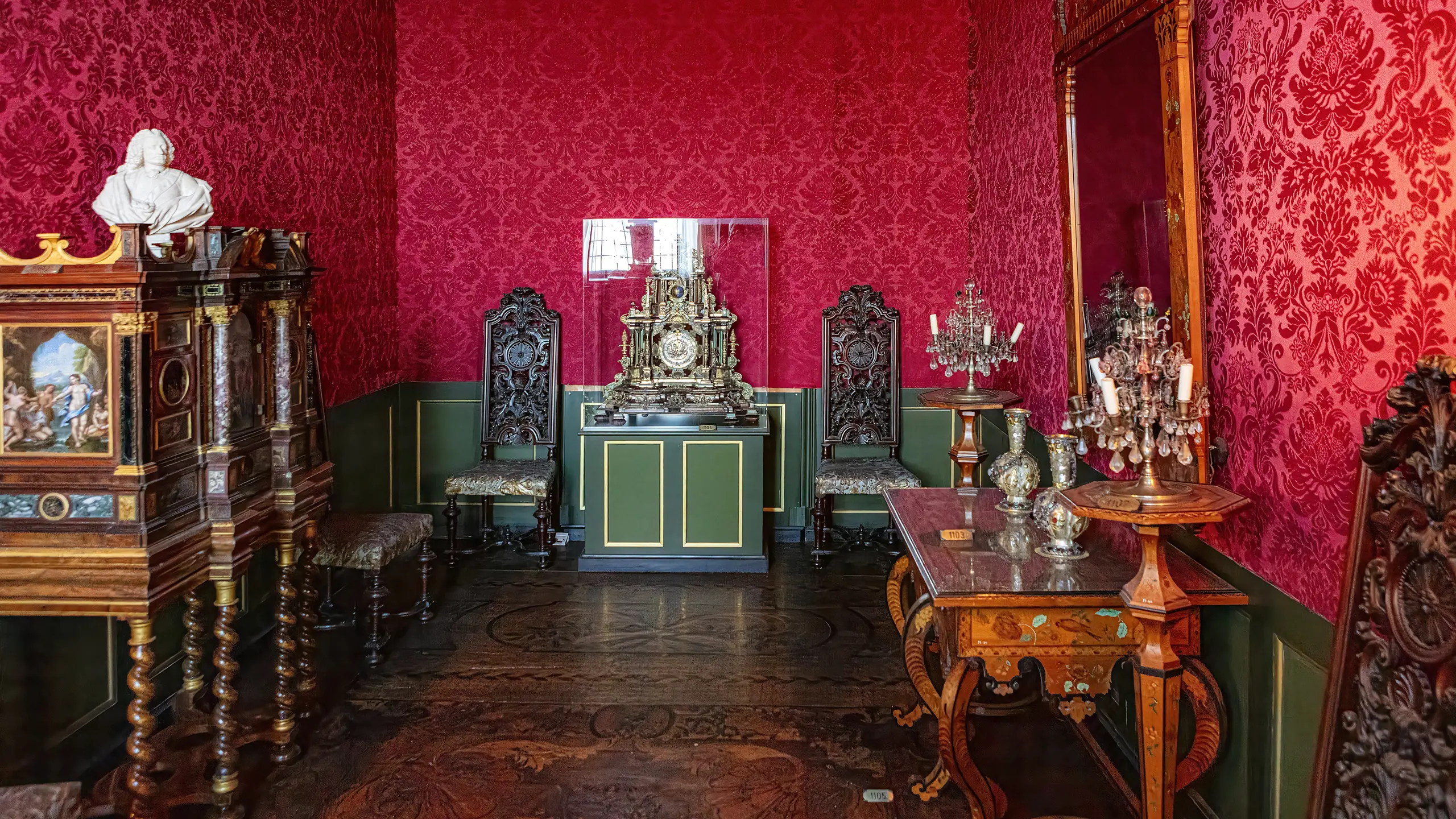Frederik IV’s Cabinet (room 11)
This room was used by Frederik IV’s sister Princess Sophie Hedevig as an audience chamber. Unfortunately, none of the original furnishings or decorations have been preserved. Instead, the room is decorated with former royal furnishings from Frederiksberg Palace and the Prince’s Mansion.

From royal residence to chronological collection
During the mid-19th century, Rosenborg Castle was converted into a chronological collection: a museum with exhibits that was open to the general public. This happened in part as a result of the end of the absolute monarchy in Denmark. When the absolute monarchy was abolished, Frederiksberg Palace and the Prince’s Mansion – which was originally built as a residence for Crown Prince Frederik (V) and Crown Princess Louise – became property of the state. At this time, Rosenborg Castle also changed hands, from property of the king to property of the state.
When Rosenborg Castle was renovated to fill its new role as museum, many of the formerly royal interiors from Frederiksberg Palace and the Prince’s Mansion were relocated to Rosenborg. These objects and furnishings were displayed as museum pieces and integrated as decorations on the first floor here at Rosenborg Castle. For example, the floor in Frederik IV’s Chamber was moved here from the Prince’s Mansion, while the ceiling painting comes from Frederiksberg Palace.
In this room, most of the exhibits date from the decades around 1700.
Objects in the room
If you are at the museum, you can admire the fascinating objects in the room and read more about them below.
The descriptions are brief and generally do not include images. They are intended as an added resource if you would like more detailed information about an item, such as who made it, its origin and its meaning.